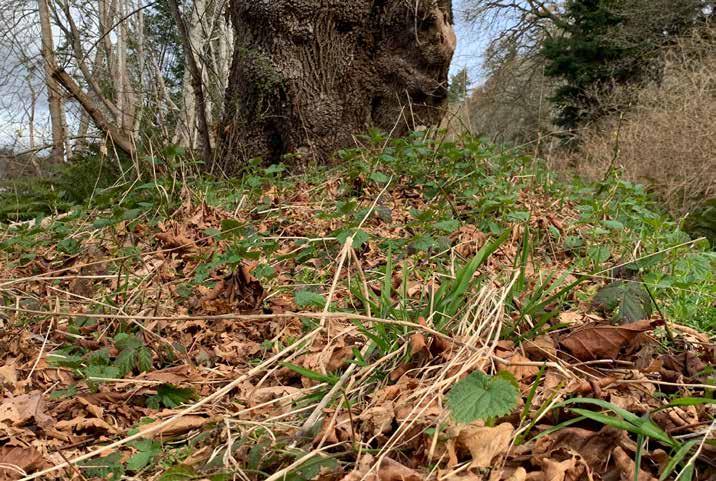HEALTH & WELLNESS
FLORA + FAUNA OF THE NORTHWEST COAST LUNA LOISEAU-TREMBLAY
NETTLE BUTTERFLIES OF VAN COUVER ISLAND
Milbert's Tortoiseshell Butterfly Photo © Luna Loiseau-Tremblay
Satyr Angelwing Butterfly Photo © Luna Loiseau-Tremblay
Red Admiral Butterfly Photo © Adobestock / Peter Fleming
As the days get longer and the variety of bird song
Another species to eat nettle is the stunning Milbert’s
increases with the incoming yearly migration of species,
Tortoiseshell butterfly (Agalis milberti), with a wing pattern
the promise of warmer temperatures peeks through cold
that is unmistakable. Milbert’s dorsal side has a dark brown
mornings. We start to notice the buzzing of bees, the
base colour with bright yellow and orange rimmed wing
sound of frogs and soon, we will start seeing the first but-
margins and blue crescents outlined in black along the en-
terflies of the spring.
tire wing margin. Most impressive are the two reddish or-
Stinging Nettle (Urtica dioica), one of our most common plant species which many of us harvest to eat, is the food plant for the caterpillar of several local butterfly species which we will start to see as the warmer season picks up. These species are part of the family Nymphalidae or the Brushfoots, referring to their reduced forelegs that are brushlike in shape. This is a large family of butterflies, with a large variation in appearance. One of these species is the beautiful Satyr Anglewing (Polygonia satyrus), a very common butterfly in this area. Medium-sized, it has a bright goldish orange or tawny upperside (dorsal), black blotches and gold yellow muted outline along the dark coloured ragged appearing wing margins. Satyrs have blunt “tails” coming off the lower hindwing and their underside (ventral) is a variegated bark-like pattern of shades of grey, brown and tan with little black dots and with white V mark in the middle of the hindwing. The Satyr Anglewing is very common, even within city boundaries where nettle grows in disturbed areas, and also in rural settings such as riparian edges, parks, damp shady forests openings, trail edges and gardens that have nettle growing closeby. It is seen nectaring on many different plants including sap from willow’s, lilacs, and many other plants in flower during that time. Adults are seen flying in early spring and again in July to September. 2 0 | C O M PA S S M A G A Z I N E | I s s u e 3 2
ange bars in the dorsal forewing, forming what looks like a “cat eye” pattern. This species is seen mainly in April to June and again in late summer July to August and occurs close to nettles, along riparian areas, in parks and gardens if there are nettles closeby. These tortoiseshells can be seen nectaring on many different flowering species such as pearly everlasting, asters and a wide variety of flowers. The third species is the Red Admiral or Admirable (Vanessa atalanta), another butterfly that cannot be confused with any other. This species has a soft black base, slashes of thick red bands across the dorsal forewing and red bands with little blue spots rimming the dorsal hindwing. On the tips of the forewings are white blotchy spots and small blue areas at the tips of the dorsal forewing. Red admirals are seen mostly from May to October and can be found in any open habitat. This species migrates into BC from further south, but it can also have successful hibernation in our area and breed the following spring. Although stinging nettle is often viewed as a weed, maintaining public nettle patches would help insects survive— as the impacts of climate change inevitably change the dynamics of our ecosystems. All coastal butterfly species are struggling, with numbers dwindling over the past few years—even the most common species are seen much less. Encouraging and planting native species is a simple thing we can do to try to maintain the biodiversity of global and local ecosystems—and save our butterflies. W W W. C O M PA S S M A G A Z I N E . C A





